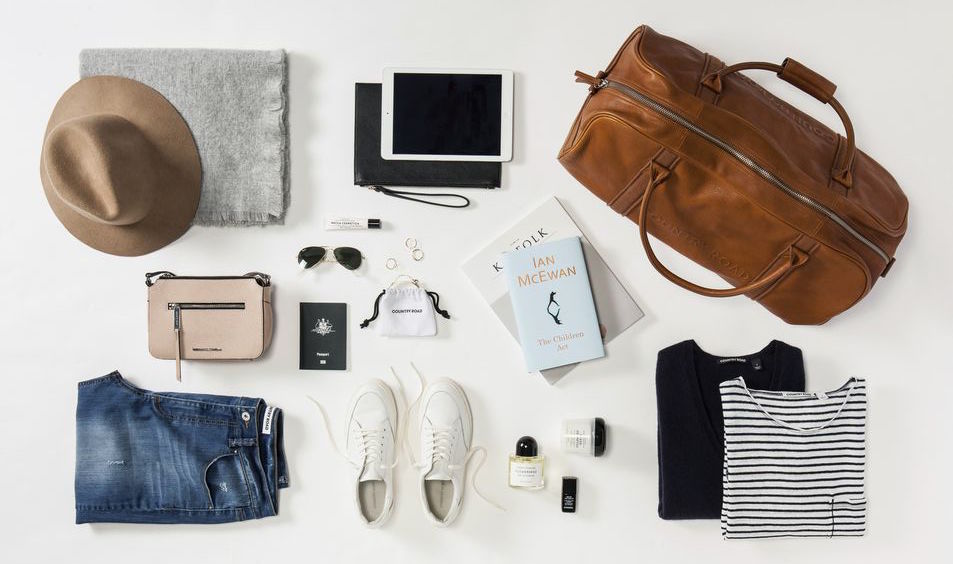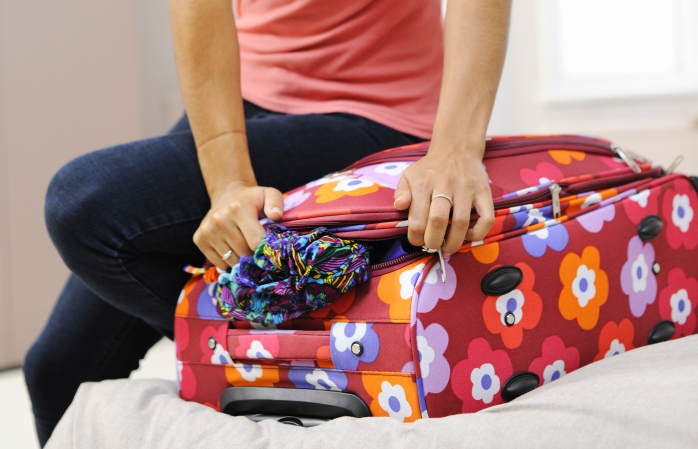4 Cute and Festive Desserts for the Holidays
Posted by Editor in Holiday Season on Jul 16th, 2018 | Comments Off on 4 Cute and Festive Desserts for the HolidaysThe holidays are a great time to get together with friends and loved ones, and there’s nothing that brings loved ones together like decadent desserts. And what’s better than dessert, than dessert you made yourself? Whether for a huge party or an intimate get-together, here are a few simple desserts that you can make for your friends and loved ones.

1. Candy Cane Cake
Candy can cake is quick and easy, and is perfect for those who don’t want too much of fuss for holiday desserts. All you need is a box of chocolate cake, white vanilla frosting, and mints or candy canes.
Simply bake the cake according to the instructions in the box, and do the same for the vanilla frosting. Then add frosting to the cake, and decorate the cake with mints along the side to create a festive (and edible!) wonderland scene.

2. Confetti Shortbread
These festive bites go well after any dish, as small squares filled with festive green and red sprinkles. They are also good to eat on their own, or with a warm glass of milk.
To make confetti shortbread, simply mix a cup of salted butter and 2/3 cups of sugar. Then, mix in a half teaspoon almond or vanilla extract. Lower the speed of the mixer, then slowly add in 2 ¼ cups of flour. Then fold in red and green sprinkles with the mixture. After chilling for about 30 minutes, cut into squares, and bake for about ten minutes.

3. Sugar Cookies
Sugar cookies are easy go-to holiday desserts because of their ease and versatility. You could decorate these sugary desserts with icing, creating any design that you can come up with. If piping isn’t your strong suit, get help from friends (or kids early to the party) to decorate the cookies with food-safe markers.
To make these sugar cookies, first beat together 2 sticks of unsalted butter and a cup of sugar. Once the mixture turns fluffy, add three large eggs, a teaspoon of vanilla extract, and a half-teaspoon of salt. Then gradually add 3 ¼ cups of flour.
Chill the mixture for two hours, then roll out the dough and cut into shapes. After chilling for ten minutes, bake for 12 minutes at 400 degrees Fahrenheit. Cool before decorating.
4. Candied Stars
If you’re tired of sugar cookies, these candied stars are great alternatives. These cute deserts are created by mixing candied popcorn and cinnamon candies, then shape into stars. Simply combine a cup of sugar, a cup of water, 1/3 cup of corn syrup and two tablespoons of sugar. Melt in a saucepan, and bring to a boil.
Remove the pan from heat, and stir in ¼ teaspoon of salt and 1 teaspoon vanilla, and pour quickly over 8 cups of popcorn. Quickly shape the mixture using star-shaped cookie cutters.
5 Useful Packing Tips for a Year-Long Trip
Posted by Editor in Travel Guide on Jul 16th, 2018 | Comments Off on 5 Useful Packing Tips for a Year-Long TripOne year is quite a long time to travel. Most of us cannot even tell where we will be in our lives in a year’s time, let alone foresee the things we will need for the entire 365 days and fit them all in a suitcase.
The key here is to pack for a long trip around the world just like any other short trip. Here are some tips on how to make it possible to pack reasonably for a year-long travel.

1. Ditch the ‘Just in Case’ Thinking
If you have travelled before, you probably have a good idea how much ‘just in case’ thinking can make you over pack. Instead of bringing extra clothes because just in case, pack clothing items that are double-duty. Bring a pair of sandals that you can wear from an afternoon tour to a nice place for dinner.
2. Skip the Heels
Well, unless you’re travelling for work, you may need a pair of office heels. But if work allows you to wear flats shoes, then a pair of black flats is a more versatile pair to bring than black heels. A pair of flat shoes and flip-flops will take you to any place around the world.

3. Bring a Couple of Scarves
Scarves are your fashion saviour when you have very limited clothing options. They can easily jazz up plain outfit, not to mention how they can disguise bad hair day, keep you warm on a chilly night and serve as bikini cover up when at the beach. You’ll be surprised how much more use you can get from a scarf over a pair of jeans.
4. Stock Up on T-Shirts
T-shirts can be dressed up or down. You can layer them scarves, cardigans and coats. They take up very little room in your suitcase and closet, they do not need ironing, and they are very cheap when your need to replace them. a well-fitted shirt, a pair khaki skinny jeans, silver bangles and slides and a bold lip will get you anywhere looking stylish.
5. Wear Your Clothes More than Once
It’s not practical to just wear your clothes once and then wash it right away. Get the most out of every piece you bring by using them at least twice before washing them. Even if you’re travelling with friends, no one will notice you’ve been wearing the same jeans three times in a row.

When packing, especially for long-term travels, you do not need to bring everything for every situation. Remember that you can always go shopping when the need for something you don’t have with you arises. Also, having a lot of free room in your luggage means more space for you to fill up with new finds.
What is the Difference between a Humidifier, a Dehumidifier, and an Air Purifier?
Posted by Editor in Home Improvement on Jun 22nd, 2018 | Comments Off on What is the Difference between a Humidifier, a Dehumidifier, and an Air Purifier?Singapore may be humid, but there are instances where a place, such as an office or your own home, may not have the same quality that you’re used to. Throughout the year, you may need the help of a machine to regulate the air quality depending on how dry or humid it is.
These devices should ideally keep the humidity in an enclosed area within thirty-five to forty-five percent. However, while these three devices may seem similar at first, they serve different purposes. Here they are for your consideration:

Humidifier
Humidifiers add humidity to the air, which is great for areas or rooms that feel too dry, which can cause sores and itching for sensitive skin that also dries out as a result. They usually come in four types: ultrasonic, evaporative, impeller-driven, and steam vaporizers.
Both ultrasonic and impeller-driven humidifiers produce a cool mist to add humidity to the room in different ways. The latter uses ultrasonic waves in order to produce mist, and the former uses a high-powered fan to evaporate the water into the air as a way to make cool mist.
Meanwhile, steam and evaporative vaporizers heat water into mist with electricity. While some models allow the mist to cool down slightly before exiting the machine, these models are usually known as warm mist humidifiers.

Dehumidifier
While humidifiers work by adding moisture into the air, dehumidifiers do the opposite by taking moisture from the air to lower its humidity. Dehumidifiers are often used for areas where the humidity is too high and needs to be lowered, such as rooms with little ventilation.
Reducing the humidity will also reduce the instances of allergens, such as mold and mildew, from thriving. This also makes them great for drying laundry indoors quickly and easily, aside from being generally easier to maintain than humidifiers.
However, if the lack of moisture triggers nasal allergies that are more prone to infection, a humidifier may be needed to add water into the air and keep the humidity at a level that will minimize said allergies.

Air Purifier
This device is helpful for those afflicted with an allergic reaction spread through dust mites, pollen, or pet hair. Air purifiers remove these pollutants and other particles from the indoor air and do so via two methods: mechanical filter and electrostatic filter.
While mechanical filters are fairly straightforward, electrostatic filters use static electricity in order to make suspended particles stick to a surface where they can be easily wiped. Purifiers can also produce either ozone or UV light, which may have their own side effects.
Ozone, for instance, should not be used if there are people nearby who suffer from respiratory problems such as asthma, and should instead be near purifiers that use ultraviolet light, which are often used in many hospitals and health centers.
(Disclaimer: This list is compiled in no particular order.)
8 Must-Know Tips to Achieve Your Dream Body
Posted by Editor in Fitness on Jun 22nd, 2018 | Comments Off on 8 Must-Know Tips to Achieve Your Dream BodyEveryone wants a healthier, stronger and leaner body, but not everyone knows the real thing behind exercise, diet and fitness. If you’re one of the majorities who wishes to get leaner, keep these tips and strategies in mind as you journey towards achieving the body you’ve always dreamed of.
1. Change up your routine every two weeks
If motivation is a big factor, keep your routine as interesting as possible by changing it up every two weeks. Boredom can be your biggest enemy when working out. According to experts, people find variety much more enjoyable.

2. Fuel up after workout
For someone trying to be fit, breakfast is not exactly the most important meal, but the post-workout meal. While you may be tempted to skip refueling, thinking that you might undo the burnt calories, a combo of 15 grams of protein and 30 grams of carb will help restore your energy, promote muscle recovery and help build a leaner physique.
3. Hang on tight instead of pulling up
Can’t do a single pull up? No worries. Simply hanging on the monkey bar for as long as you can is enough to slowly improve your upper-body strength. Keeping your body still will naturally engage your core, hips and lower back, as well as your arms. If you want to bring it up a notch, slowly move your legs up and down.

4. Put on your bikini every so often
Do not pack away your bikinis even if it’s rainy season. Doing so may lead to potential surprises of ‘how did I get these extra love handles?” or “why does this fit awfully now?” Keep your two-piece handy so you can put it on every now and then and make sure you still like what you see in the mirror.
5. Proper execution matters—a lot!
50 push-ups won’t matter if you are not executing the exercise correctly. Before adding more weight or increasing your speed, perfect your form and technique first. This is especially important if your routine requires you to perform as many reps as possible during a certain amount of time.

6. Give your ropes some love
The best exercise tool available is a jump rope. It may seem juvenile until you see perfectly-toned-bodied boxing pros doing jumping ropes every time they train. Not only is this workout equipment inexpensive, they are also compact and portable. Who would’ve thought that this children’s toy can help you burn 200 calories in 20 minutes?
7. Sweat out to your own tunes
Listening to your favorite upbeat music will help you power through an arduous workout. In fact, studies show that people who exercise on machines designed to play music based on their speed and effort exert more energy (without being aware of it) than those who exercise without music.
These are just a few tips to hopefully help you achieve your fitness goals. Now that you’re armed with the right knowledge, you already have a good idea of how you should tackle the quest for better health and fitness.
Requirements for Freight Forwarding in Singapore
Posted by Editor in Business on Jun 7th, 2018 | Comments Off on Requirements for Freight Forwarding in Singapore
If your business needs to send merchandise through local freight or international freight, you should not negotiate or hire a shipping company or a local logistics company without consulting a freight forwarder in Singapore. You will be able to move cargo easily anywhere in the country or around the world because the freight forwarding company has connections to customs, various logistics services, and transportation agencies.
To understand the complexity of freight forwarding, let’s look at the requirements for importing and exporting in Singapore.

Import Requirements in Singapore
Importation refers to the process of bringing goods from a free trade zone into Singapore. If you hire a freight forwarding services company to handle the documentation of your merchandise, the process of importation becomes much easier because the logistics company understands the Customs Act regulations and has connections to different transportation companies. The freight forwarder can also arrange for the shipping company to transport the goods safely and on time.
As the importer or consignee or receiver of the merchandise, you will be required to complete or submit the following to your freight forwarding company:
• Customs permit, customs account and a Unique Entity Number
• Confirmation that the goods are not within the restrictions
• Inter-bank GIRO for payments and taxes to Singapore Customs
• Goods and Services Tax and Duty are not required if the merchandise remains within a free trade zone or stored in a licensed warehouse, but the importer or shipper is required to pay GST and/or duty if the merchandise will be sold locally
• GST and/or Duty are not required if the merchandise is granted exemption through the Temporary Import Scheme, Major Export Scheme, Approved Import GST Suspension Scheme, and Import GST Deferment Scheme
• Declaration documents for customs clearance such as invoices, permits, endorsements, packing list, Bill of Lading for sea freight or Air Waybill for air freight
• Insurance bond or banker’s or company guarantee of the goods

Export Requirements in Singapore
A fast goods shipping coordinator can also handle the processing of requirements and permits for exportation of goods from Singapore. As the shipper or freight forwarder, it is your responsibility to determine whether the merchandise is allowed for air freight or sea freight; complete and relevant information of the merchandise is provided to the logistics company or the freight forwarding agent; and that the dangerous goods and properly packed, labeled, and classified. The freight forwarder is responsible for looking for the best possible solutions for transportation of the goods.
The following are the requirements for exporting goods from Singapore to a designated country:
• Customs account, customs permit, and a Unique Entity Number
• Confirmation that the goods are subject or not to restrictions under the Competent Authorities in Singapore
• Declaration for Dangerous Goods in case the merchandise is classified as such; this document requires the material or product safety data that will determine the classification of the merchandise
• Containerised cargo for sea freight require documents such as Bill of lading, invoices, permit for cargo lodgement, and packing list
• Conventional cargo for land freight or air freight require Airway Bill, invoices, packing list, permit number for cargo lodgment
GST and duty are not required for export of merchandise from Singapore.

